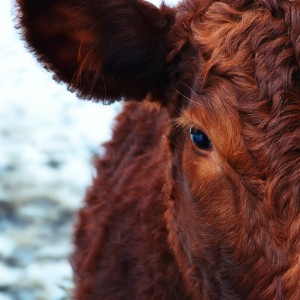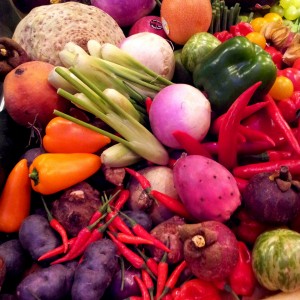Why milk does NOT do the body good.
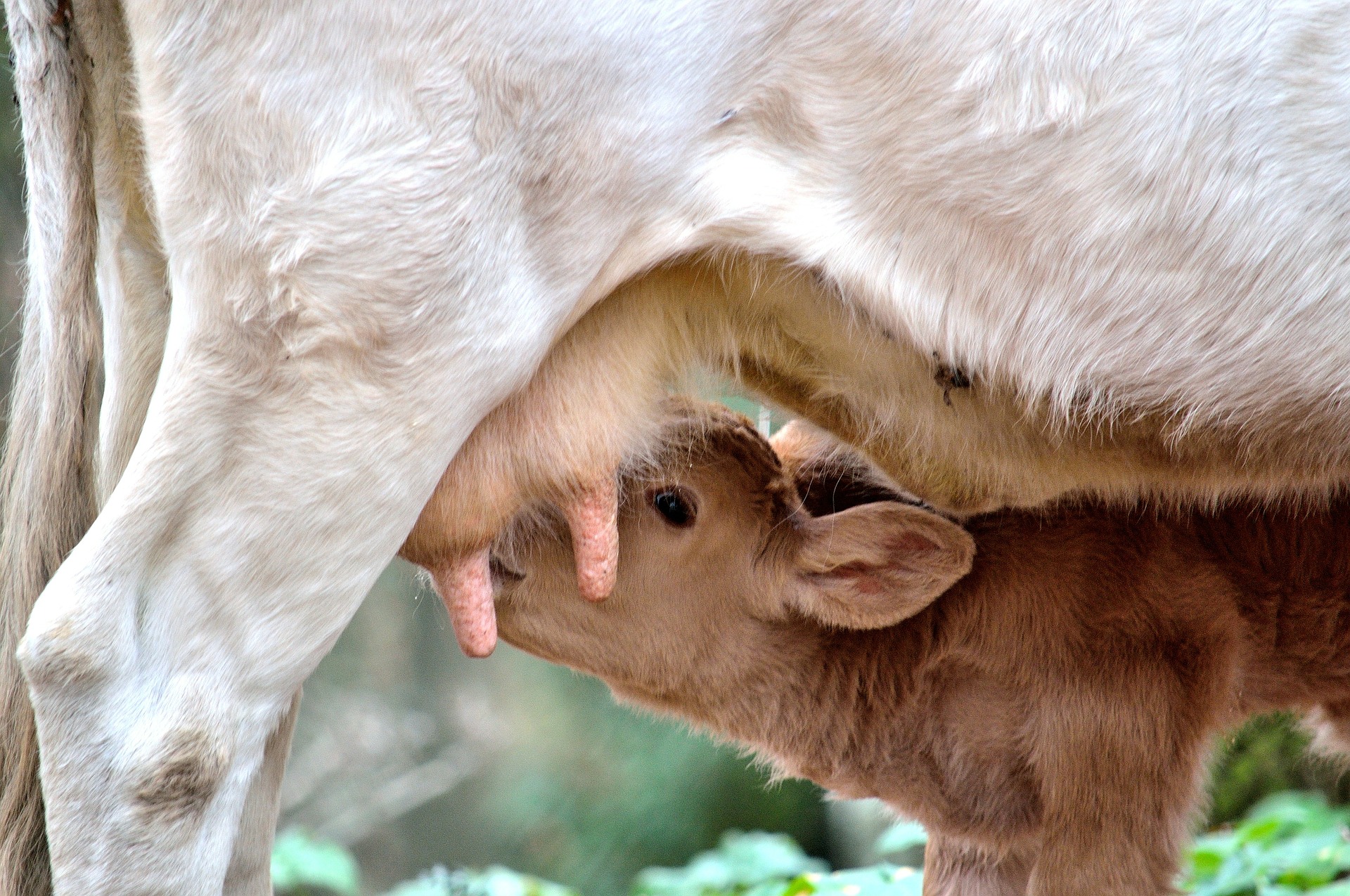
Well, I suppose the title is a bit misleading; cow’s milk definitely does her calf’s body good! Before we go any further, I want to tell you what Morpheus told Neo in The Matrix, “This is your last chance. After this, there is no turning back. You take the blue pill – the story ends; you wake up in your bed and believe whatever you want to believe. You take the red pill – you stay in Wonderland, and I show you how deep the rabbit hole goes.”
Cow’s milk is designed to nourish a 100 lbs newborn calf who will grow to a whopping 2000 lbs in just two years!!! Why would we put that in a human body, who weighs about 7 lbs at birth and will grow to an average of 150 lbs? Let’s examine the health benefits of dairy or lack thereof.
I am going to start with osteoporosis because we are constantly told by virtually everyone that we should consume dairy to build strong bones and to prevent osteoporosis.
Researchers at Yale University went through 34 published studies in 16 countries. They found out that the countries that consume the highest amount of dairy and animal protein, such as USA, UK, and Sweden, also have the highest rate of osteoporosis. They also found that African Americans who consumed an average of 973mg of calcium per day were nine times more likely to experience hip fractures than Black South Africans whose daily calcium intake was only 196mg. (Abelow BJ, 1992).
Several studies show that animal proteins leach calcium from the bones. Unlike plant proteins from grains, beans, vegetables, and fruits, animal protein is high in sulfur-containing amino acids, like cystine and methionine, and tends to acidify the body. In an attempt by the body to neutralize this acid, calcium is released from the bones and gets filtered through the kidney into the urine (Breslau NA, 1988).
A 1994 American Journal of Clinical Nutrition report also showed that calcium losses were cut in half when animal proteins were eliminated from the diet (Remer T, 1994).
The Harvard Nurses’ Health Study followed 72,337 postmenopausal women for 18 years and concluded that milk consumption was not associated with a lower risk of hip fracture (Feskanich D, 2003).
A study of older men and women in Sydney, Australia, showed that consumption of dairy products, particularly early in life, was associated with an increased risk of hip fracture in old age. Those with the highest dairy product consumption had approximately double the risk of hip fracture compared with those with the lowest consumption (Cumming RG, 1994).
The Archives of Pediatric and Adolescent Medicine, in 2012, reported a study done at Harvard University that tracked fracture rates in 6,712 adolescents. The results showed that active children who consumed the largest quantities of milk actually had more bone fractures than those who consumed less.
Lactose Intolerance
Most adult mammals, including humans, are lactose intolerant. Lactose is a type of sugar found in milk, and lactose intolerance is the inability to digest it because of the lack or shortage of a particular enzyme called Lactase. The symptoms include flatulence, bloating, cramps, diarrhea, nausea, borborygmi (rumbling stomach), and vomiting.
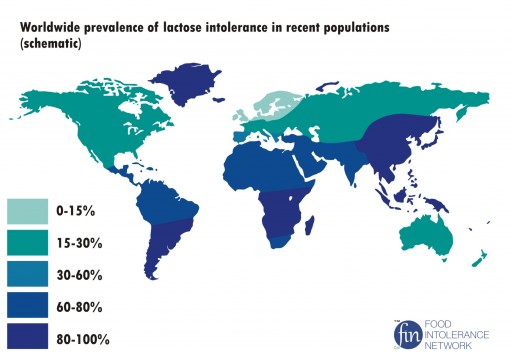
Contrary to popular belief, it is not a disorder at all. Most mammals stop producing lactase after they stop breastfeeding (Swallow, 2003). Around 75% of the world’s human adults show a decrease in lactase activity during adulthood, but some human beings continue to produce lactase into adulthood and are called lactase persistent (Bertron P, 1999).
Lactase persistence is caused by a genetic mutation that is a direct result of our domestication of other mammals and is most prevalent in Northern Europeans (95%) and least prevalent in Native Americans (0%), most parts of Africa, and East Asia (5%).
In an effort to find out how long ago this mutation occurred, a team of researchers examined DNA extracted from 7,000-year-old fossils of ancient Europeans and did not find the tell-tale mutation. Instead, the results suggest that human beings only started drinking milk sometime after 5000 BC (Burger J, 2007).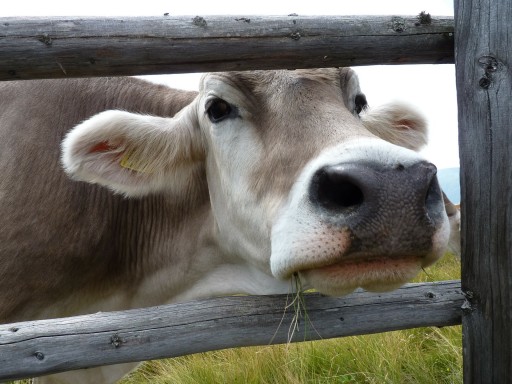
Dairy and Cancer
Most of the cow’s milk available today comes from pregnant cows whose estrogen and progesterone levels are markedly elevated and, when consumed by humans, can increase their own estrogen level (Maruyama K, 2010) and may create an environment that is conducive to estrogen-sensitive cancers like breast, prostate, endometrial and ovarian cancers. This particular study showed that men, women, and children who consume milk from pregnant cows absorb the estrogen present in the milk. It also showed that it suppresses gonadotropin secretion, followed by a decrease in testosterone secretion. In addition, the study also showed that the sexual maturation of prepubertal children could also be affected.
In Harvard’s Physicians’ Health Study, researchers followed 21,660 male physicians for 28 years. They found an increased risk of prostate cancer for those who consumed more than two dairy servings daily compared to those who consumed little or no dairy products (Song Y, 2013).
New research published in the Journal of the National Cancer Institute studied 1,893 women from the Life After Cancer Epidemiology Study who had been diagnosed with early-stage invasive breast cancer. It showed that as little as 0.5 servings a day increased the risk of mortality significantly (Kroenke CH, 2013).
A pooled analysis of 12 prospective cohort studies, which included more than 500,000 women, found that women with high intakes of lactose, about 30 grams which is equivalent to that found in 3 cups of milk per day, had a modestly higher risk of ovarian cancer, compared to women with the lowest lactose intakes (Genkinger JM, 2006). Another study found that not only milk but all animal-derived foods (including meat and eggs) could have adverse effects on hormone-related cancers such as ovarian cancer (Ganmaa D, 2005).
Contaminants in Dairy
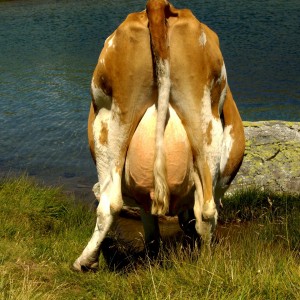 Milk contains a wide range of contaminants as well. In addition to hormones and growth factors produced within a cow’s body, synthetic hormones are also used to increase the production of milk (Outwater JL, 1997).
Milk contains a wide range of contaminants as well. In addition to hormones and growth factors produced within a cow’s body, synthetic hormones are also used to increase the production of milk (Outwater JL, 1997).
Antibiotics are routinely added to the feed or water of healthy poultry, cattle, and swine to promote faster growth (Visek, 1978) and prevent infections that occur when animals are housed in crowded, unsanitary, and stressful conditions. A prevalent condition in dairy cows is mastitis, or inflammation of the mammary glands. 80% of antibacterial drugs, which is about 29 million pounds, are sold for use in livestock in the United States. In 2010, almost 52% of retail chicken breasts tested by the FDA were contaminated with antibiotic-resistant E. coli. Just one type of superbug, MRSA, kills about 19,000 Americans annually, more than HIV/AIDS.
Some other examples of contaminants found in milk are pesticides, polychlorinated biphenyls (PCBs), and dioxins (TCDD) (Bhandari SD, 2005). Even though PCBs were banned in 1979, it continues to be widespread in our soil, air, and water. More than 90% of human PCB exposure is through food, mainly fish, shellfish, meat, and dairy products. Plants take up only small amounts of PCBs from the soil.
Dioxins are highly toxic byproducts of various industrial processes, notably herbicide production and paper bleaching. Dairy products are responsible for one-fourth to one-half of the dietary intake of dioxins. Their half-life in the body is estimated to be seven to eleven years. In the environment, dioxins tend to accumulate in the food chain. The higher in the animal food chain one goes, the higher the concentration of dioxins. PCBs and TCDD belong to the “dirty dozen,” a group of dangerous chemicals known as persistent organic pollutants. TCDD is classified by International Agency for Research on Cancer ( IARC) as a “known human carcinogen.”
A study published in the Journal of Toxicology and Environmental Health (Schecter A, 2001) conducted 12 separate analyses on 110 food samples purchased from different cities in the US to measure the concentration of toxic chemicals (dioxins, dibenzofurans, and PCBs) in the US food supply. They found that the category with the lowest toxic equivalent (TEQ) level was a simulated vegan diet with 0.086 ppt compared to 2.4 to 2.2 ppt for non-vegan men and women, respectively. The food category with the highest TEQ concentration was farm-grown freshwater fish fillet with 1.73 ppt, followed by butter with 1.12 ppt. TEQ concentrations in ocean fish, beef, chicken, pork, eggs, cheese, and ice cream ranged from 0.33 to 0.51 ppt.
Other contaminants include melamine, harmful to the kidney and urinary tract (Fischer WJ, Encyclopedia of Dairy Sciences. 2nd ed.), and aflatoxins, carcinogenic toxins that cannot be destroyed in pasteurization (Prandini A, 2007).
Cardiovascular Disease, Diabetes, Obesity, and Allergies
Milk sugar, milk protein, fat, and saturated fat in dairy products pose health risks for children and may lead to obesity, diabetes (Saukkonen T, 1998), and heart disease. A Finnish study of 3000 infants showed that early introduction of cow’s milk-based infant formula predisposes young children who are genetically susceptible to Type I diabetes (Kimpimaki T, 2001).
A study published in the Archives of Disease in Childhood shows that children who drank 1% or skim milk were not any less likely to be obese than those who drank full-fat milk (Scharf RJ, 2013).
And contrary to popular belief, a recent meta-analysis found no evidence for the argument that increasing dairy intake will reduce body weight (Chen M, 2012).
Dairy is also a significant contributor of saturated fat and cholesterol to our diet, which can 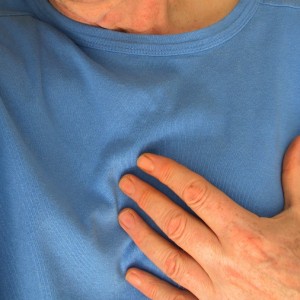 increase the risk of cardiovascular disease (Warensjo E, 2004).
increase the risk of cardiovascular disease (Warensjo E, 2004).
On the other hand, a low-fat, plant-based diet can prevent heart disease and reverse it (Szeto YT, 2004) (Ornish D, 1990).
Allergy to cow’s milk is the most common food allergy among infants and children. In addition, cow’s milk has always been known as one of the reasons for colic in babies, but now new studies show that Mothers who consume cow’s milk while breastfeeding can also cause colic by passing the cow’s antibodies to the baby through breast milk (Jarvinen KM, 1999) (Paronen J, 2000).
Environmental Impact
According to the United Nations Food and Agriculture Organization, animal agriculture is one of the primary causes of climate change. It generates 18% of all greenhouse gas emissions worldwide, including 9% carbon dioxide emissions, 37% methane emissions, and 65% 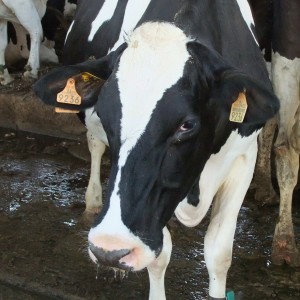 nitrous oxide emissions. Their 2006 Livestock’s Long Shadow report estimated that 7,516 million metric tons per year of CO2 are attributable to cattle, buffalo, sheep, goats, camels, horses, pigs, and birds raised for food. Furthermore, that livestock production accounts for more direct greenhouse gas emissions overall than all trains, ships, planes, and road transportation combined. A later report published by the Worldwatch Institute in 2009 estimated that 51 percent of GHG emissions may be attributable to agriculture, specifically animal agriculture and that Livestock’s Long Shadow apparently underestimated the amount of land used for livestock and feed production by a large margin.
nitrous oxide emissions. Their 2006 Livestock’s Long Shadow report estimated that 7,516 million metric tons per year of CO2 are attributable to cattle, buffalo, sheep, goats, camels, horses, pigs, and birds raised for food. Furthermore, that livestock production accounts for more direct greenhouse gas emissions overall than all trains, ships, planes, and road transportation combined. A later report published by the Worldwatch Institute in 2009 estimated that 51 percent of GHG emissions may be attributable to agriculture, specifically animal agriculture and that Livestock’s Long Shadow apparently underestimated the amount of land used for livestock and feed production by a large margin.
According to the Intergovernmental Panel on Climate Change (IPCC), methane is more than 20 times as effective as carbon dioxide at trapping heat in the atmosphere. As a result, methane concentration in the atmosphere in the past two centuries has increased by 143%. The EPA estimates that animal agriculture accounts for 50% to 85% of total ammonia emissions produced by people in the United States.
The global water footprint of animal agriculture is 2,422 billion cubic meters, about one-fortone-fourthtotal global water footprint, and 19 % of that is related to dairy cattle. It takes 683 gallons of water to produce just 1 gallon of milk. It takes a whopping 4000 gallons (15142 liters) of water to produce just one day’s supply of animal-based foods for a single person as opposed to merely 300 gallons (1135 liters) for a plant-based supply. A recent Oxford University study found that the dietary greenhouse-gas emissions among meat eaters were between 50% and 54% higher than among vegetarians and between 99% and 102% higher than among vegans.
In 2011, the U.S. Department of Agriculture (USDA) produced the first detailed data on how large-scale dairy facilities contribute to greenhouse gas emissions. They monitored the emissions of ammonia, carbon dioxide, methane, and nitrous oxide from a commercial dairy with 10,000 dairy cows. The results indicated that, on average, the facility generated 3,575 pounds of ammonia, 33,092 pounds of methane, and 409 pounds of nitrous oxide daily (Leytem AB, 2011). A 2011 report by FAO estimates there were 260 million dairy cows in the world at the time. Assuming a linear extrapolation, one can imagine the amount of greenhouse gases emitted per year by just the dairy industry on a global level! Ditching animal products, including meat, eggs, and dairy, is one of the most significant steps one can personally take towards reducing their ecological, carbon, and water footprints.
A Glimpse into Buttercup’s Life
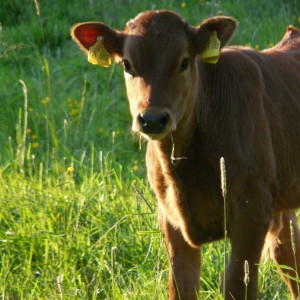
While we’re at it, why not explore how that carton of milk you have sitting in your refrigerator got there? Let’s take a look at the fate that awaits Buttercup. Shortly after her first birthday, she will be restrained by being strapped down to a rack, commonly known as a “rape rack,” and will be artificially inseminated or raped. One arm is inserted into her rectum while using the other to insert a long metal rod holding semen into her vagina.
Her gestation period is nine months, similar to human pregnancy. After she delivers, the calf is usually taken away from her within 24hrs, and just two months after her delivery, she will be led right back to the rape rack again to be artificially inseminated. She is continuously kept pregnant because Mothers produce the most milk during the first few months after delivery.
Cows are highly maternal animals, and both the mother cow and the baby calf suffer terribly from being separated at such a young age. John Avizienius, Deputy Head of the RSPCA farm animals department, says that he “remembers one particular cow who appeared to be deeply affected by the separation from her calf for a period of at least six weeks. When the calf was first removed, she was in acute grief; she stood outside the pen where she had last seen her calf and bellowed for her offspring for hours. She would only move when forced to do so. Even after six weeks, the mother would gaze at the pen where she last saw her calf and sometimes wait momentarily outside of the pen. It was almost as if her spirit had been broken and all she could do was to make token gestures to see if her calf would still be there”.
If her calf 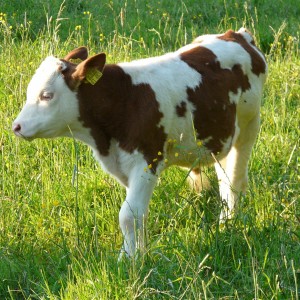 is male, then he will enter the veal industry like most male calves born to a dairy cow. He will be castrated without anesthesia (farm animals never afforded anesthesia, no matter the procedure), and his neck will be chained to a small crate to ensure he doesn’t develop any muscles. He will be fed a milk substitute which will make him gain 2 pounds per day, and he is purposely deficient in iron so that his flesh will stay pale as a result of anemia. He will be kept in these conditions until it’s time for him to be slaughtered, ranging from just a few days old to 6 months, depending on the type of veal.
is male, then he will enter the veal industry like most male calves born to a dairy cow. He will be castrated without anesthesia (farm animals never afforded anesthesia, no matter the procedure), and his neck will be chained to a small crate to ensure he doesn’t develop any muscles. He will be fed a milk substitute which will make him gain 2 pounds per day, and he is purposely deficient in iron so that his flesh will stay pale as a result of anemia. He will be kept in these conditions until it’s time for him to be slaughtered, ranging from just a few days old to 6 months, depending on the type of veal.
A female calf could also have the exact same fate as the male calf since, statistically, only one female calf is needed to replace the existing Mother. And even if she gets chosen to become a future dairy cow, she will not be able to stay with her Mother and enjoy the milk she produces because that is the product the dairy industry sells to us to make a profit. She is then dehorned, typically without any anesthesia, and waits for the exact fate of physical and mental agony her Mother endures.
People around the world do such atrocious things to a cow to make her produce more and more milk. They pump her with genetically engineered growth hormones, drugs, and antibiotics and feed her an unnatural low-fiber, high-protein diet that includes animal by-products. In addition, before each milking, she is injected with synthetic oxytocin, which is usually used in mammals, including humans, to increase the force, frequency, and duration of uterine contractions to induce labor and stimulate milk release. Sadly, ‘phooka,’ blowing air into the cow’s uterus through a hollow pipe, is still practiced in many villages around the world because they think it increases milk production. Mahatma Gandhi says in his autobiography, The Story of My Experiments with Truth, ”since I had come to know that the cow and the buffalo were subjected to the process of phooka, I had conceived a strong disgust for milk. Moreover, I had always held that milk is not the natural diet of man.” On an interesting side note, one of the dictionary meanings of milking is “to exploit as much as possible.”
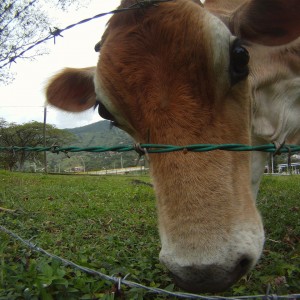 Maintaining such high milk production for such an unnatural length of time exhausts and depletes her. This, in turn, gives way to a plethora of diseases at a very young age. Therefore, even though the life expectancy of cows is about 20-25 years (the oldest cow on record lived to be 49 years old!), like most dairy cows, she will be considered worthless when she is around five years old because her milk production will slow down, at which point she will be slaughtered.
Maintaining such high milk production for such an unnatural length of time exhausts and depletes her. This, in turn, gives way to a plethora of diseases at a very young age. Therefore, even though the life expectancy of cows is about 20-25 years (the oldest cow on record lived to be 49 years old!), like most dairy cows, she will be considered worthless when she is around five years old because her milk production will slow down, at which point she will be slaughtered.
Her meat is considered low quality and will be used in fast food restaurants, processed meat, dog food, cat food, etc. And other parts of her body will find their way into products like upholstery, medicines, insulin, gelatin, floor wax, cosmetics, footwear, candles, and soaps.
That beautiful image of a cow and her calf standing in front of a big red barn surrounded by green pastures exists only in our head. When we pick up a carton of milk from the store or a local farm, we are paying someone money to sustain this torture. We are funding the industry to rape, enslave, exploit, torture and murder needlessly.
Joie de Vivre
Cows are beautiful, intelligent, social animals that form matrilineal groups that are highly stable and close-knit and are interconnected by means of 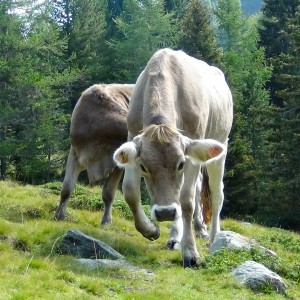 friendship relationships between non-kin partners (Reinhardt, 1981).
friendship relationships between non-kin partners (Reinhardt, 1981).
Their personalities or individual differences are as diverse as dogs, cats, or people. The leader is usually the most popular and social, not the most aggressive. And like us, they do not want to die and have a strong will to live.
Yvonne, a dairy cow, escaped from a Bavarian farm in May 2011 by charging through a 4,000-volt electric fence before she was about to be slaughtered. And she made headlines by hiding in the woods for about four months despite a shoot-on-sight order and a €10,000 reward for her head. She was finally caught in September when she came out of the woods one evening to stare at some calves on a farm near the woods. She is in a sanctuary with her son and sister, where she can live out the remainder of her life.
Similarly, two-year-old Emily escaped from a slaughterhouse in Massachusetts by leaping over a 5-foot gate and survived in the woods for over a month in the dead of winter foraging with a herd of deer. She was also lucky enough to find compassion like Yvonne. These are not by any means isolated incidents; a quick search on the web will lead you to many such stories.
Life Sans Dairy
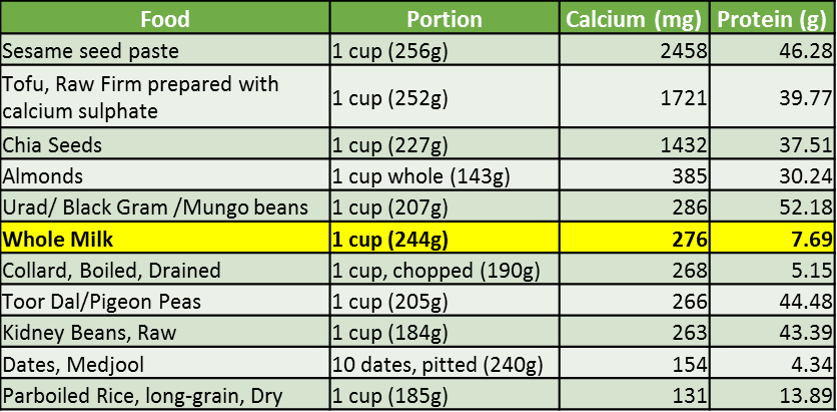
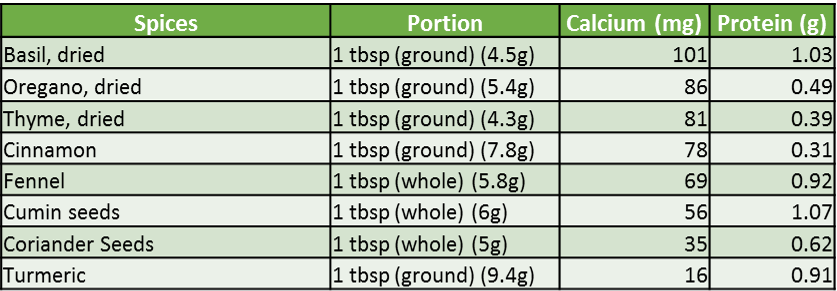
Human beings are perfectly capable of deriving all the essential nutrients we need to thrive by eating a plant-based diet. For example, a glance at the tables above will show how easy it is to meet our daily dosage of calcium from a plant-based diet without dairy or supplements.
Calcium absorption from milk is only approximately 32%, while the absorption rate for broccoli, bok choy, mustard greens, turnip greens, kale, and some other leafy green vegetables ranges between 40% and 70% (Heaney RP, 1990). Therefore, consuming more than the required calcium does not improve bone integrity (Feskanich D, 2003).
Vitamin D is essential for the absorption of calcium irrespective of the source, and the sunlight is the best natural source of Vitamin D. Around 5 – 25 mins of sun exposure (ultraviolet B rays) to the arms and legs or the hands, face, and arms will be enough to meet your bodies requirement. Exposure time will depend on the time of day, where you live in the world, the color of your skin, and how much bare skin is exposed to sunlight. Only 10-15 percent of dietary calcium is absorbed without Vitamin D. Plant-based dietary sources are mushrooms, fortified plant milk, orange juice, and cereal. Studies have shown that exercise is the most effective way for children and adults to increase bone density (Prince R, 1995) (Going S, 2003) (Lunt M, 2001) (Lloyd T, 2002).
There is accumulating evidence that clearly shows milk does not help you build strong bones; studies identify dairy as one of the causes of osteoporosis. It also comes with a myriad of potentially life-threatening side effects, such as various cancers, resistance to antibiotics, cardiovascular disease, diabetes, obesity, and allergies. On the other hand, a plant-based diet has been shown to lower the risk of these diseases and even reverse some of the damages. Plenty of exercise and sunshine coupled with a balanced plant-based diet is the optimum way to get strong, healthy bones. And the best part is that optimum health can be achieved without devastating our biosphere and without taking part in an inhumane and redundant practice. I suppose Popeye really knew his stuff! “I’m strong to the finish, ’cause I eats me Spinach, I’m Popeye the sailor man! (toot, toot)”
References
Abelow BJ, H. T. (1992). Cross-cultural association between dietary animal protein and hip fracture: a hypothesis. California Tissue Int., 50, 50:14-18.
Bertron P, B. N. (1999). Racial bias in federal nutrition policy, part I: the public health implications of variations in lactase persistence. Journal of the National Medical Association, 91:151-157.
Bhandari SD, S. R. (2005). Hazards resulting from environmental, industrial, and agricultural contaminants. In: Schmidt RH, Rodrick GE, eds. Hoboken, NJ: John Wiley & Sons, Inc.
Breslau NA, B. L. (1988). Relationship of animal protein-rich diet to kidney stone formation and calcium metabolism. Journal of Clinical Endocrinology and Metabolism, 66:140-146.
Chen M, P. A. (2012). Effects of dairy intake on body weight and fat: a meta-analysis of randomized controlled trials. The American Journal of Clinical Nutrition, 96:735-747.
Cumming RG, K. R. (1994). Case-control study of risk factors for hip fractures in the elderly. American Journal of Epidemiology, 139:493-503.
Feskanich D, W. W. (2003). Calcium, vitamin D, milk consumption, and hip fractures: a prospective study among postmenopausal women. The American Journal of Clinical Nutrition, 77:504-511.
Fischer WJ, S. B. (Encyclopedia of Dairy Sciences. 2nd ed.). Contaminants of milk and dairy products: contamination resulting from farm and dairy practices. In: Fuquay JW, ed. (2011 ed.). San Diego, CA: Academic Press.
Ganmaa D, S. A. (2005). The possible role of female sex hormones in milk from pregnant cows in the development of breast, ovarian, and corpus uteri cancers. Medical Hypotheses, 65:1028-37.
Genkinger JM, H. D. (2006). Dairy products and ovarian cancer: a pooled analysis of 12 cohort studies. Cancer Epidemiology, Biomarkers, & Prevention, 15:364-72.
Going S, L. T. (2003). Effects of exercise on bone mineral density in calcium-replete postmenopausal women with and without hormone replacement therapy. Osteoporosis International, 14:637-643.
Heaney RP, W. C. (1990). Calcium absorption from kale. The American Journal of Clinical Nutrition, 51:656-657.
Jarvinen KM, M.-K. S. (1999). Cow’s milk challenge through human milk evoked immune responses in infants with cow’s milk allergy. The Journal of Pediatrics, 135:506-12.
Kimpimaki T, E. M. (2001). Short-term exclusive breastfeeding predisposes young children with increased genetic risk of type I diabetes to progressive beta-cell autoimmunity. Diabetologia, 44:63-69.
Kroenke CH, K. M. (2013). High- and low-fat dairy intake, recurrence, and mortality after breast cancer diagnosis. Journal of the National Cancer Institute, 105(9):616-23.
Leytem AB, D. R. (2011). Emissions of ammonia, methane, carbon dioxide, and nitrous oxide from dairy cattle housing and manure management systems. Journal of Environmental Quality, 40:1383-94.
Lloyd T, B. T. (2002). Modifiable determinants of bone status in young women. Bone, 30:416-421.
Lunt M, M. P.-N. (2001). The effects of lifestyle, dietary dairy intake and diabetes on bone density and vertebral deformity prevalence: the EVOS study. Osteoporosis International, 12:688-698.
Maruyama K, O. T. (2010). Exposure to exogenous estrogen through intake of commercial milk produced from pregnant cows. Pediatrics International, 52(1):33-8.
Ornish D, B. S. (1990). Can lifestyle changes reverse coronary heart disease? The Lifestyle Heart Trial. Lancet, 336:129-133.
Outwater JL, N. A. (1997). Dairy products and breast cancer: the IGF- 1, estrogen, and bGH hypothesis. Medical Hypotheses, 48:453-461.
Paronen J, B. B. (2000). Effect of maternal diet during lactation on development of bovine insulin-binding antibodies in children at risk for allergy. The Journal of Allergy and Clinical Immunology, 106:302-306.
Prandini A, T. G. (2007). On the occurrence of aflatoxin M1 in milk and dairy products. Food and Chemical Toxicology, 47:984-91.
Prince R, D. A. (1995). The effects of calcium supplementation (milk powder or tablets) and exercise on bone mineral density in postmenopausal women. Journal of Bone and Mineral Research, 10:1068-1075.
Reinhardt, V. A. (1981). Cohesive relationships in a cattle herd (Bos indicus). Behaviour, 77:121-151.
Remer T, M. F. (1994). Estimation of the renal net acid excretion by adults consuming diets containing variable amounts of protein. The American Journal of Clinical Nutrition, 59:1356-1361.
Saukkonen T, V. S. (1998). Significance of cow’s milk protein antibodies as risk factor for childhood IDDM: interaction with dietary cow’s milk intake and HLA-DQB1 genotype. Childhood Diabetes in Finland Study Group. Diabetologia, 41:72-8.
Scharf RJ, D. R. (2013). Longitudinal evaluation of milk type consumed and weight status in preschoolers. Archives of Disease in Childhood, 98:335-340.
Schecter A, C. P. (2001). Intake of dioxins and related compounds from food in the U.S. population. Journal of Toxicology and Environmental Health, Part A, 63(1):1-18.
Song Y, C. J. (2013). Whole milk intake is associated with prostate cancer-specific mortality among U.S. male physicians. Journal of Nutrition, 143:189-196.
Swallow, D. M. (2003). Genetics of lactase persistence and lactose intolerance. Annual Review of Genetics, 37:197-219.
Szeto YT, K. T. (2004). Effects of a long-term vegetarian diet on biomarkers of antioxidants status and cardiovascular disease risk. Nutrition, 20:863-866.
Visek, W. J. (1978). The Mode of Growth Promotion by Antibiotics. Journal of Animal Science, 46:1447-1469.
Warensjo E, J. J. (2004). Estimated intake of milk fat is negatively associated with cardiovascular risk factors and does not increase the risk of a first acute myocardial infarction. The British Journal of Nutrition, 91:635-642.
